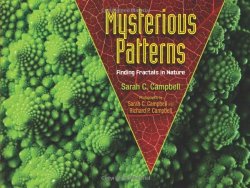
Finding Fractals in Nature
Review posted September 15, 2014.
Boyds Mills Press, 2014. 32 pages.
2014 Sonderbooks Stand-out: #6 Children's Nonfiction
I love it when an author takes a fairly complicated mathematical concept and makes it picture-book simple. And in this case, she makes it look easy. (I’ve taught math. Trust me; it’s not easy to explain things simply.)
This book explains fractals and how they appear in nature – with plenty of photographs illustrating the concepts every step of the way.
Every fractal shape has smaller parts that look like the whole shape. Fractals are everywhere in nature, and can form in many different ways. A tree is a fractal. It starts with one shape that changes in the same way over, and over, and over again.
This tree [There’s a diagram below this paragraph.] starts with a stem, which splits into two branches, which each split into more branches, until the smallest branches split into twigs.
Many smaller parts of the tree – large branches with smaller branches and twigs – look like the whole tree, with its trunk and branches and smaller branches.
I already knew about fractals. I’ve seen mathematical formulas for them. I’ve even begun knitting a Sierpinski Triangle Scarf. However, after reading this book, I’m noticing fractals around me far more than ever before.
I think the same thing will probably happen with kids who read this book – and this book that includes no numbers higher than five may even inspire some child to find out more about the beautiful mathematics behind it.
